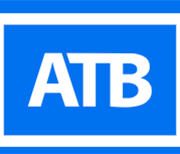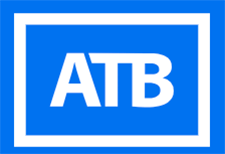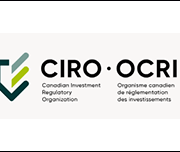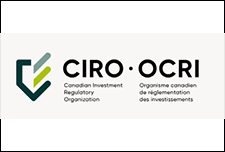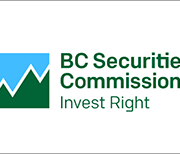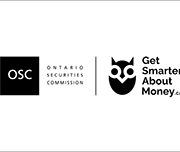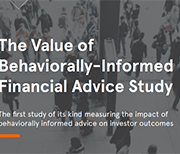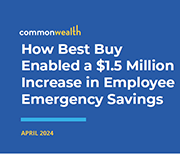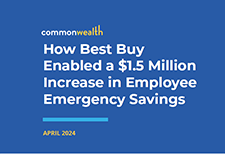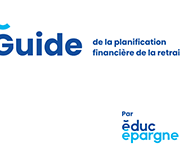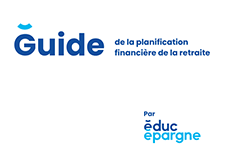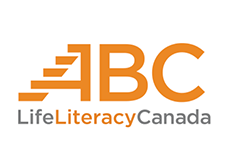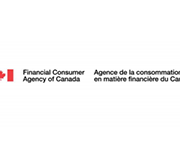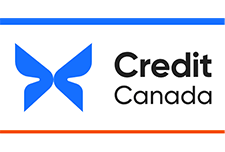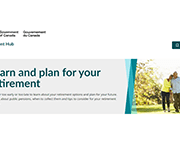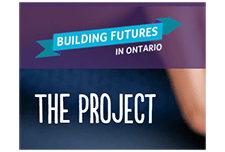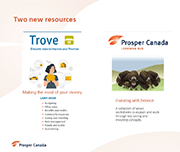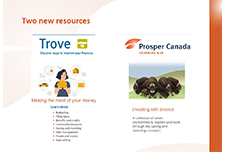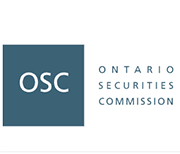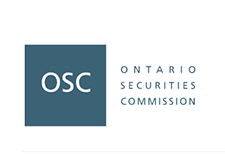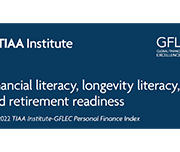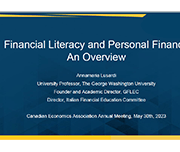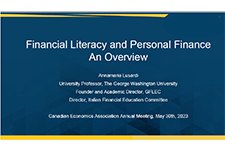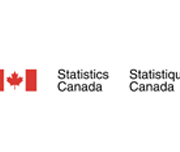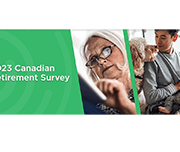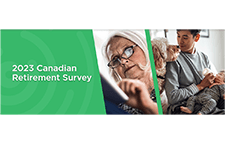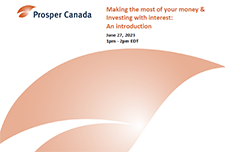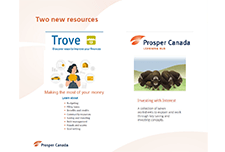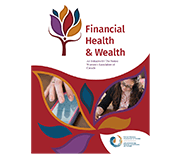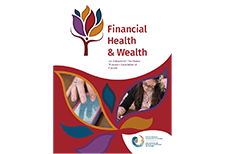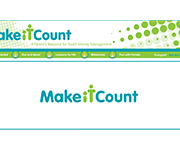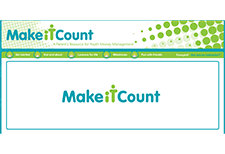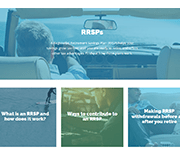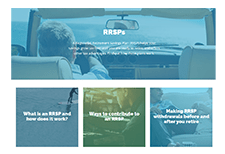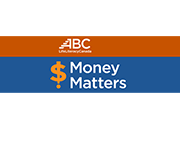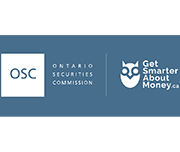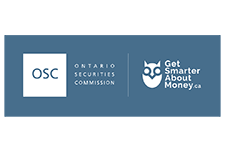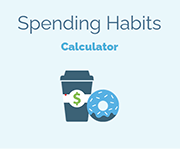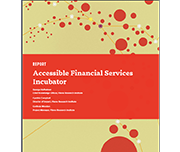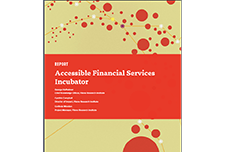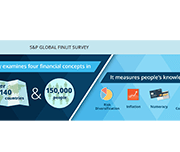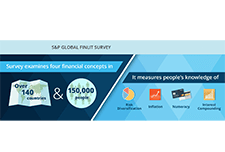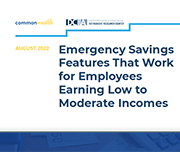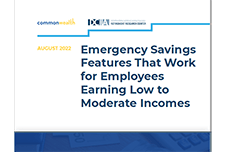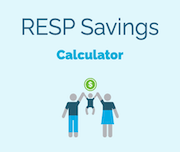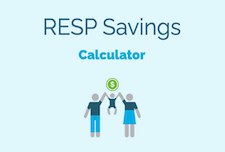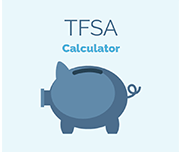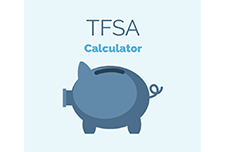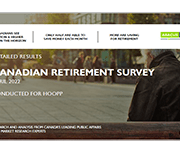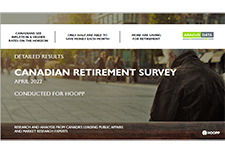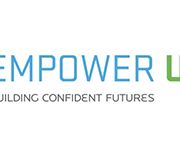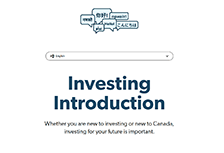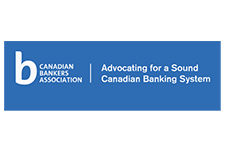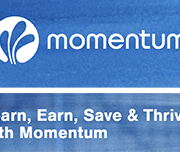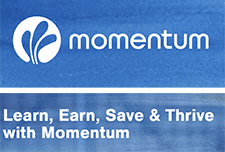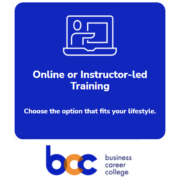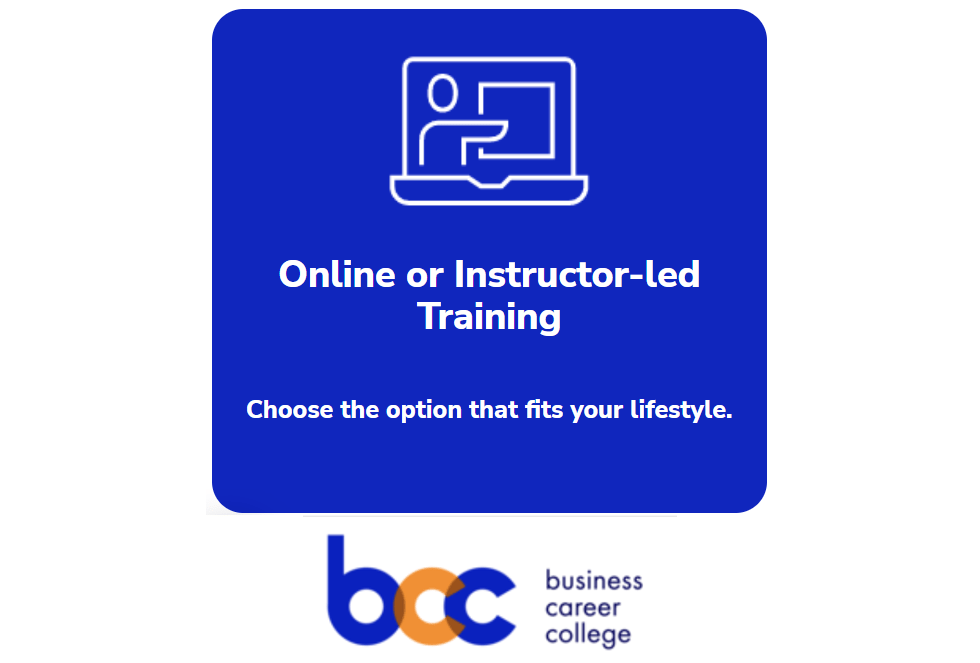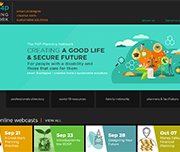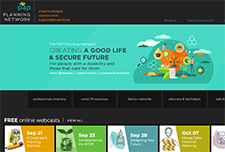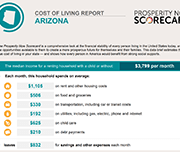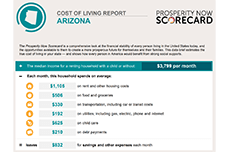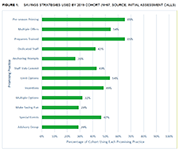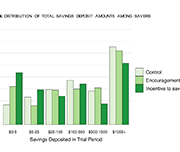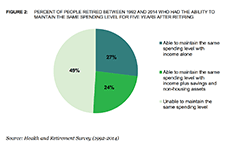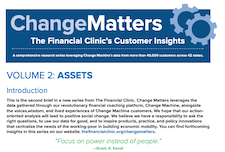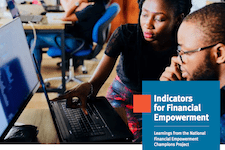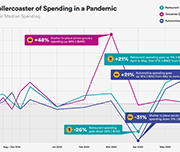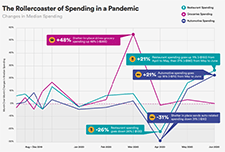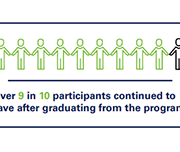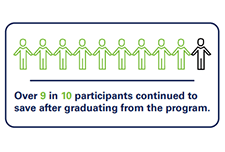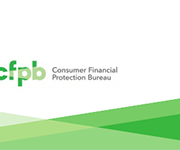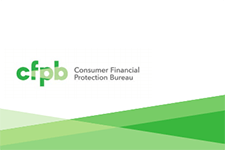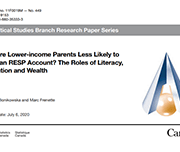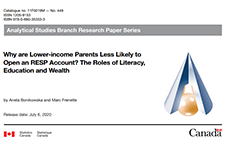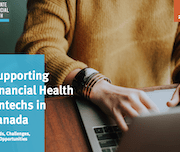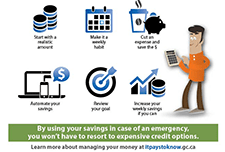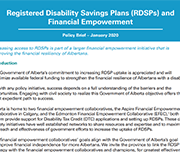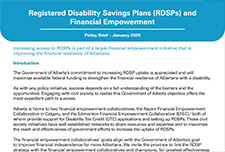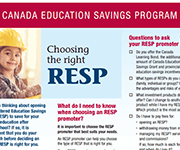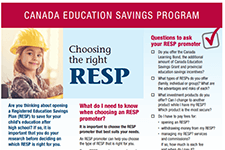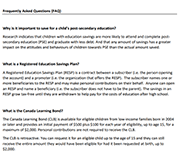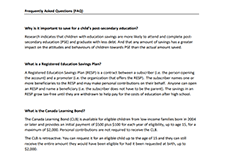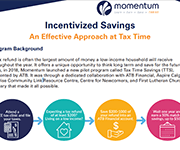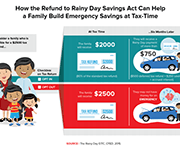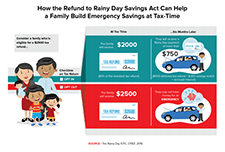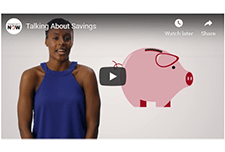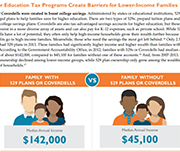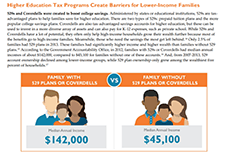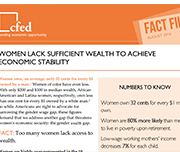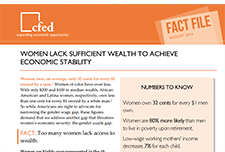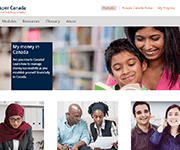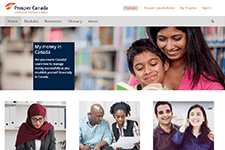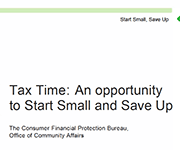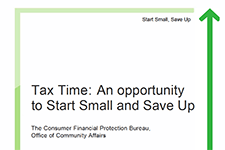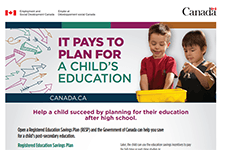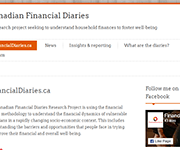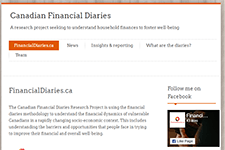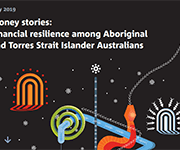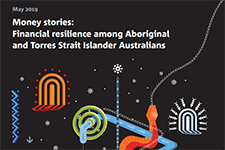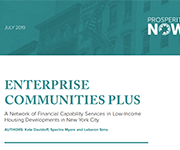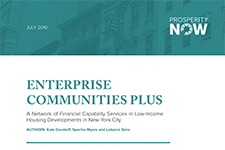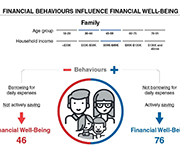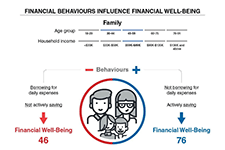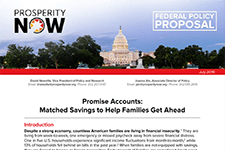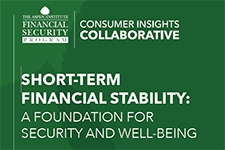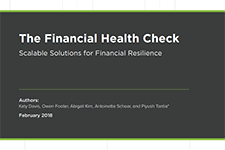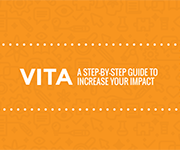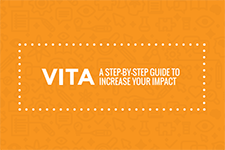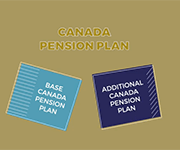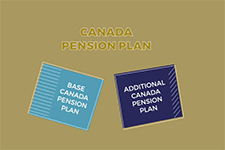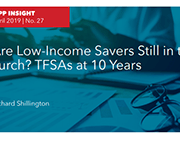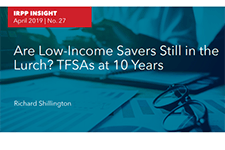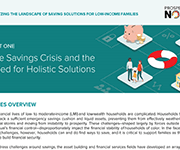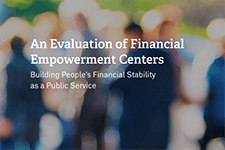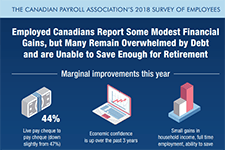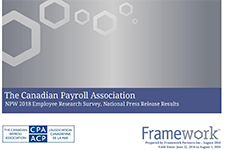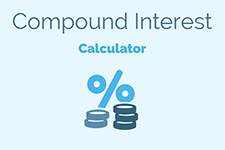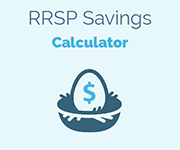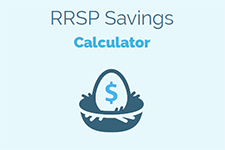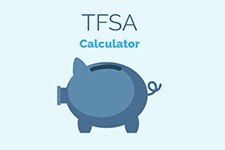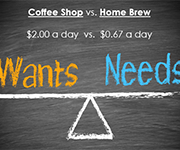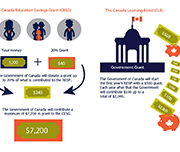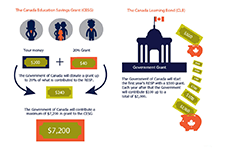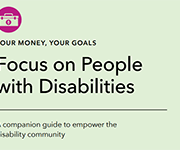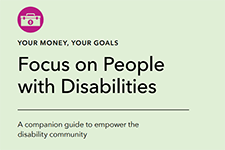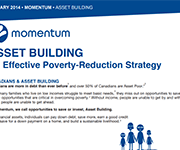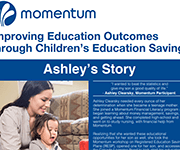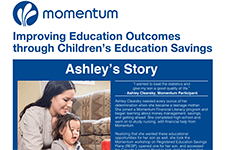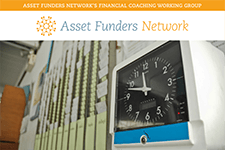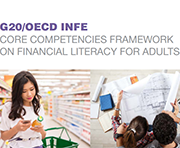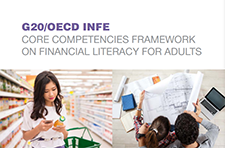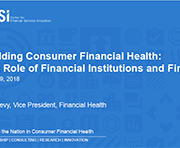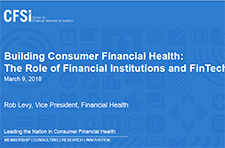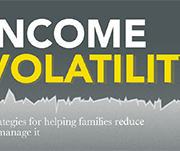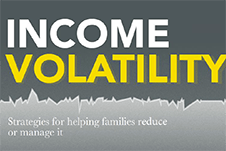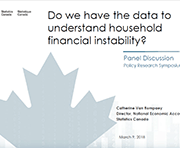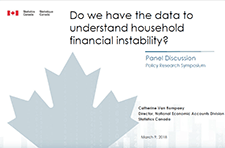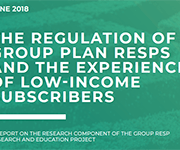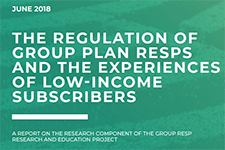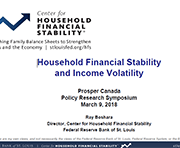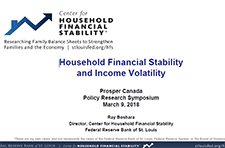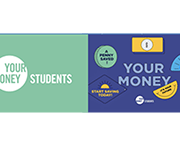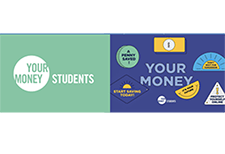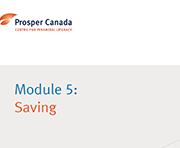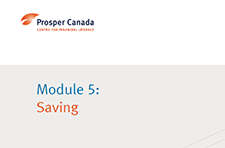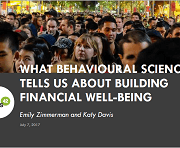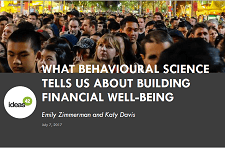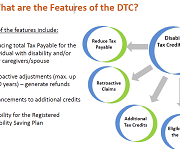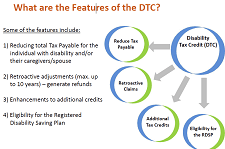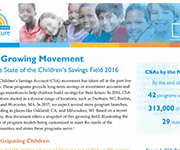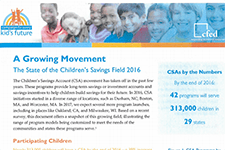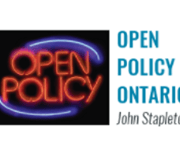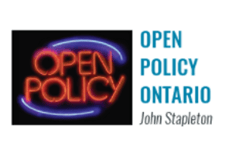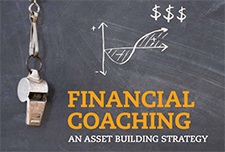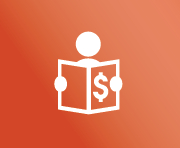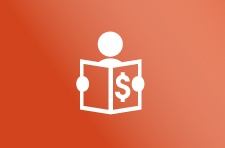Resources
Presentation slides and video time stamps
View the Making the most of your money course.
View the Investing with interest booklet.
Read the presentation slides for this webinar.
Time stamps for the video:
0:50 – Welcome, introductions, and warm-up
3:10 – Making the most of your money overview
12:57 – Demo
25:26 – Investing with interest overview
40:00 – Other resources
44:04 – Q&A
Financial Health & Wealth
You worry about your family's physical, mental and spiritual health. You take care of yourself and make sure you and your family are healthy, safe and happy. Many people do not realize that you also need to be financially healthy. Financial wellness is understanding and managing your own money. Money is a big way that others control and influence our lives. Sometimes we need to depend on others to give us money and tell us what to do with money. Opening a bank account, understanding where your money is coming from, and saving money will help you to become financially independent and financially healthy. This report from The Native Women's Association of Canada covers the importance of financial health and has sections on financial information covering bank accounts, insurance, budgeting, saving, credit cards, car loans, income taxes and housing.
Making the most of your money
Managing money is challenging. In the current economic environment, it has become even more difficult. For people living on a low-income, managing the day-to-day expenses, let alone life changes or emergencies, can be overwhelming. Prosper Canada has created an online course that you can share or use with your clients to help them access tools and resources to support their daily money management. Making the most of your money is an easy-to-use, accessible, online course to help people living on a low income organize their finances and explore ways to increase the amount of money coming in and reduce what is going out. This interactive course has activities, videos, handouts and resources that are also downloadable.
5 benefits of paying down debt with your tax refund
The average Canadian tax return amount in 2023 is $2,072 and that money can go a long way when it comes to meeting your financial goals. But remember, this isn’t a cash windfall; it’s YOUR money that the government borrowed from you, so Credit Canada recommends using it for needs versus wants. More specifically, consider using it to help pay down your debt.
Make it Count
Make it Count is a parent's resource for youth money management provided by the Manitoba Securities Commission that provides activities and tips to help you incorporate youth money management lessons into your daily routine. You can easily turn errands into education.
Your financial toolkit
A comprehensive learning program that provides basic information and tools to help adults manage their personal finances and gain the confidence they need to make better financial decisions. Learn more about the program and how to use the learning modules.
English
Soaring with savings - Tips and tools to help you save
SWS Worksheet #1 – The importance of saving (Fillable PDF)
SWS Worksheet #2 – Create a savings goal (Fillable PDF)
SWS Worksheet #3 – Savings support network (Fillable PDF)
SWS Worksheet #4 – Saving for emergencies (Fillable PDF)
SWS Worksheet #5 – Saving for unstable income (Fillable PDF)
SWS Worksheet #6 – Saving for education (Fillable PDF)
SWS Worksheet #7 – Saving for retirement (Fillable PDF)
Soaring with Savings- Full booklet

Soaring with savings - Training tools
French
Encourager l’épargne - Conseils et outils pour vous aider à épargner
Encourager l’épargne - l’aide d’animation
Ressources
CELI calculatrice, La Commission des valeurs mobilières de l’Ontario
REER, La Commission des valeurs mobilières de l’Ontario
Épargnez plus facilement, CVMO
Investir et épargner pendant une récession, La Commission des valeurs mobilières de l’Ontario
Financial Literacy for Black and African American Students
In honor of Black History Month, BestColleges in the United States interviewed financial expert Terrance Dedrick to help curate a financial literacy resource for Black and African Americans. This article includes links to these organizations in the United States that cater to Black and African Americans: "Brown Ambition": A popular podcast for Black and African American students covers important financial literacy topics and provides advice from others who have learned financial literacy and used it successfully. Urban Wallet: A selection of free guides and resources to help students learn about spending and budgeting, investing in cryptocurrencies, and using credit cards responsibly. Association of African American Financial Advisors (AAAFA): for Black and African American students looking to work with a financial advisor to learn more about money. Operation HOPE: This nonprofit works with students and other adults alike to provide financial dignity through financial literacy training, coaching, and other services to build confidence and resilience. Building Bread: Designed for Black students and young professionals, Building Bread provides a free financial planning course along with other low-cost advanced classes.
Registered Retirement Savings Plan (RRSP)
A Registered Retirement Savings Plan (RRSP) can help you save for retirement while also saving at tax time — or even getting a rebate. The articles from the Ontario Securities Commission (OSC) can help you understand more about opening, contributing to, and withdrawing from an RRSP.
Money matters
Money Matters is a free introductory financial literacy program for adult learners that has been delivered to Canadians since 2011 and has reached over 80,000 adults. It was developed by ABC Life Literacy Canada in partnership with the Government of Canada and TD Bank Group and was designed by literacy practitioners. The newly released resources as part of the Money Matters program are:
Ten frugal habits to save money
The Angus Reid institute reported from a recent study that 50% of Canadians couldn’t manage an unexpected expense of $1000 or more. In the same study, when Albertans were asked what they would do with a surprise bonus or gift of $5000, 46% said they would use it to pay down debt. Only 41% said they would put it in savings or invest it. With inflation as high as it has been in over 40 years, saving money is becoming increasingly difficult for some. This article lists ten frugal habits to help you save.
Spending habits calculator
Use this calculator to see how changes to your spending habits can impact your budget and help you save more of your money.
Accessible financial services incubator
Drive through a low-income neighborhood in virtually any American city and it quickly becomes apparent that the area’s financial health is at risk. The giveaway? The abundance of payday lenders. According to the St. Louis Federal Reserve, there are now more than 20,000 of these organizations across the country—which tops even the ubiquitous McDonald’s storefront by roughly 40%.1 These alternative financial services providers offer short-term loans at interest rates that can top 400%. They appeal to desperate consumers with no access to traditional, more affordable credit and offer an immediate fix that can lead to months, if not years, of financial pain. In its Payday Lending in America series, the Pew Charitable Trusts reports that Americans spend roughly $7.4 billion (B) on payday loans each year. Could traditional financial institutions find a way to deliver credit to this consumer niche without compromising their own health? The Filene Research Institute, a consumer finance think-and-do tank, hypothesized that the answer was yes. Read the full report.
Investing and saving during a recession
If a recession seems likely, consider how your investing and savings plans may be affected. Increases in the cost of living and borrowing, combined with the overall financial uncertainty over the impact of a potential recession, can be enough to cause personal and financial stress. There is no single best way to respond to such times.
Financial literacy around the world: insights from the S&P’s rating services global financial literacy survey
The Standard & Poor's Ratings Services Global Financial Literacy Survey is the world’s largest, most comprehensive global measurement of financial literacy. It probes knowledge of four basic financial concepts: risk diversification, inflation, numeracy, and interest compounding. The survey is based on interviews with more than 150,000 adults in over 140 countries. In 2014 McGraw Hill Financial worked with Gallup, Inc., the World Bank Development Research Group, and GFLEC on the S&P Global FinLit Survey.
Rising adoption of contactless payments and digital wallets: 3 key takeaways
Over the last two years, digital payment solutions, including peer-to-peer apps, digital wallets, and contactless payment solutions, have grown in popularity and adoption. With 125 million American mobile payment users predicted by 2025 Commonwealth sought to understand the potential for these payment apps as a channel to advance inclusive and equitable financial access.
Emergency savings features that work for employees earning low to moderate incomes
Workers earning low to moderate incomes (LMI) continue to face challenges in financial security. The COVID-19 pandemic exacerbated the financial situation of many workers earning LMI. Along with the current macroeconomic environment, it has become even more challenging to build liquid savings for unexpected expenses. In this brief, we will share insights from our latest research with DCIIA Research Retirement Center on how employers and service providers can build and offer emergency savings solutions that are inclusively designed for workers earning LMI.
Investment products
There are many investment products, here's some information about them: Annuities: a contract with a life insurance company. Annuities are most commonly used to generate retirement income. Bonds: when you buy a bond, you’re lending your money to a company or a government for a set period of time. In return, the issuer pays you interest. On the date the bond becomes due, the issuer is supposed to pay back the face value of the bond to you in full. Complex investments: these investments may have the potential for higher gains, but carry greater risks. ETFs: when you buy a share or unit of an ETF, you’re investing in a portfolio that holds a number of different stocks or other investments. GICs: when you buy a guaranteed investment certificate (GIC), you are agreeing to lend the bank or financial institution your money for a set number of months or years. You are guaranteed to get the amount you deposited back at the end of the term. Mutual funds & segregated funds: when you buy a mutual fund, your money is combined with the money from other investors, and allows you to buy part of a pool of investments. Real estate: While real estate investments can offer a range of benefits, there is no guarantee that you will earn an income or profit and, like any investment, there are a number of risks and uncertainties that you need to carefully consider before investing. Stocks: The stock market brings together people who want to sell stock with those who want to buy stock. When you buy stock (or equity) in a company, you receive a piece of the company and become a part owner. Pensions & saving plans: if your employer offers contributions to your retirement or other savings plan, take advantage. Cannabis: Emerging sectors like the cannabis industry have often attracted investors hoping to be among the first to capitalize on the potential growth and high returns of what they believe are untapped markets or products that may be popular in the future. Cryptoassets: Cryptoassets primarily designed to be a store of value or medium of exchange (e.g., Bitcoin) are often referred to as “digital coins.
Preparing for financial emergencies
Some emergencies in life can affect you financially. You could get sick, lose your job, or have a costly repair to your car or home. One of the best ways to cope with unexpected financial changes is to have an emergency fund. Ideally, this fund would provide enough money to cover your essential living expenses so you can avoid taking on debt.
TFSA Calculator
A Tax-Free Savings Account (TFSA) can be used to save for any goal. You put after-tax dollars into a TFSA, but your investments grow tax-free and you won’t pay any tax on withdrawal. Use this calculator to estimate the value of the investments in your TFSA when you’re ready to withdraw them, and compare this amount to the value of your investments in a non-registered plan to see your overall estimated tax savings.
2022 Canadian Retirement Survey
The key takeaways from the 2022 Canadian Retirement Survey are: Read the full presentation conducted for Healthcare of Ontario Pension Plan.
Empower U Financial Coaching
Financial empowerment consists of five complementary strategies including financial literacy and coaching; taxes and access to benefits; safe financial products; savings and asset building; and consumer protection. Empower U serves primarily as a financial literacy and coaching and savings and asset building intervention (although partners also contribute to the other interventions). The Sustainable Livelihood Model identifies five distinct sets of assets including personal, human, social, physical and financial. The Empower U program activities are grounded by two overarching philosophies: Financial Empowerment (as defined by Prosper Canada) and the Sustainable Livelihood Model (adapted by the Canadian Women’s Foundation, based on the work of the University of Sussex Institute for Development Studies). Focusing on financial literacy and coaching, Empower U has developed an individual financial coaching component to the overall program.
Take the stress out of budgeting
Making a budget is one of the most helpful financial tools you can use on a regular basis. A budget can give you a clear picture of where your money is going. It’s easier to plan for the life you want, when you know how much money you have for saving, spending and paying off debt. If you’ve never made a budget, or have not created one in a long time, it can be an intimidating reality check. Don’t let stress or worry keep you from creating a budget. The best budgeting method to use is the one that works for you.
8 ways to prepare financially for retirement
This article from OSC provides 8 tips to help you plan for retirement. Transitioning from working life to retirement takes careful financial planning and decision-making – give yourself plenty of time to prepare. Here are some things you can do ahead of time.
Introduction to investing: A primer for new investors
Whether you’re new to investing, or new to Canada, InvestingIntroduction.ca can help. Visit the Ontario Securities Commission's refreshed website and find resources to help you make more informed investment decisions and better protect your money. The information is available in 22 languages.
Banking for newcomers to Canada
Banks offer extensive information on how newcomers to Canada can get started in their new country, including checklists, information, financial services and advice. The Canadian Bankers Association has compiled some basic information to get you started including an infographic with features of the Canadian banking system.
How women can save more money
This webinar hosted by FCAC (originally broadcast on November 17, 2021) targets women who want to learn more about managing money and building saving habits. Guest speaker, personal financial expert, Rubina Ahmed-Haq has also contributed to Canada's financial literacy blog on "Women face unique money challenges". Helpful links related to the content matter in this video: Getting help from a credit counsellor
Living your retirement
These resources from the Ontario Securities Commission are oriented towards planning for retirement. Resources include tips on insurance planning, government benefits, RRSP calculator, and more.
Emerging Technology for All: Conversational AI’s Pivotal Role
This infographic is a preview of Commonwealth's research survey of 1290 lower-and moderate-income people to understand their perceptions, needs, and uses of conversational AI.
Control, Sufficiency, and Social Support Lessons from Low-income Canadians about Financial Wellbeing
This report examines how diary participants achieve the financial wellbeing that they have. The evidence we found is that low-income people work very hard to manage their finances. They endeavor to control their finances so that, as one participant said, their finances don’t control them. They must prioritize needs and wants because there is not enough for both. One participant talked about her goal of having a ‘little bit more’ than her needs so that there was a little extra for savings or small purchases or trips. Finally, we saw that family and friends are terribly important for achieving financial wellbeing because social supports can provide loans, gifts, and emotional support. Having a low-income means that banks offer few financial supports. Of course, family and friends also make demands.
Money Mentors – Savings & Debt Resources
Collection of money management resources, including how create effective budgets, realistic spending plans, deal with your debts, save more money, build a stronger credit rating, and prepare for retirement.
Recordkeepers’ Role in Providing Emergency Savings for an Inclusive Recovery
In this webinar, Commonwealth in partnership with DCIIA Retirement Research Center (RRC) and SPARK Institute present findings from our new research about drivers and considerations of recordkeeper-provided emergency savings and host a discussion with industry experts.
Prosperity Now Scorecard Cost-Of-Living Profiles by State
Prosperity Now has created state-level Cost-of-Living profiles as new features on their Scorecard website. The Prosperity Now Cost of Living profiles provide a comprehensive look at the financial stability of every person living in the United States. Each state profile can be downloaded and used to determine the true cost of living is in the state, based on median monthly income and discretionary spending left at the end of each month after expenses. These values determine what is left over for emergency expenses and long-term aspirational expenses. This video presents the cost of living in Georgia.
Tax Time: An opportunity to Start Small and Save Up
This paper provides a description of how having liquid savings contributes to people’s financial stability and resiliency, and the unique opportunity that tax time offers to begin saving for the short and longer term. Starting to save or continuing to save when receiving a tax refund may lead to longer term financial well-being. This paper also provides a few examples of how Volunteer Income Tax Assistance (VITA) programs creatively used Bureau tools, resources and technical assistance to encourage savings as well as some of the results they reported. It provides insights from a subgroup of the programs in the cohort that collected additional information from consumers on their intent to save, the various types of accounts into which they saved, and the goals they were striving for by saving. Finally, this paper offers recommendations on some strategies that can be employed to increase people’s interest and commitment to saving during the tax preparation process.
Planning for tax-time savings
This report presents the results of a large-scale field experiment that the tax preparation company H&R Block (the Company) conducted in collaboration with the Consumer Financial Protection Bureau (the CFPB). The field experiment investigated whether customers could be encouraged, through consumer communications with and without the offer of a small financial incentive, to use a savings feature on a prepaid card to save a portion of their tax refunds from all sources, including state and federal refunds. The CFPB was particularly interested in whether consumers who receive the Earned Income Tax Credit (EITC) would be receptive to messages about saving.
2020 Financial Literacy Annual Report
The 2020 Financial Literacy Annual Report details the United States' Bureau of Consumer Financial Protection's financial literacy strategy and activities to improve the financial literacy of consumers. Congress specifically charged the Bureau with conducting financial education programs and ensuring consumers receive timely and understandable information to make responsible decisions about financial transactions. Empowering consumers to help themselves, protect their own interests, and choose the financial products and services that best fit their needs is vital to preventing consumer harm and building financial well-being. Overall, this report describes the Bureau’s efforts in a broad range of financial literacy areas relevant to consumers’ financial lives. It highlights our work, including the Bureau's:
Retirement Security and Financial Decision-making: Research Brief
A growing number of retirees are not experiencing the expected gradual reduction in spending after they retire. This report summarizes the findings of a Bureau study into whether people who retired between 1992 and 2014 had the income, savings, and/or non-housing assets to maintain the same level of spending for at least five consecutive years after retiring. The study found that about half of people who retired between 1992 and 2014 had income, savings, and/or non-housing assets to maintain the same spending level for five consecutive years after retiring. In addition, the Bureau found that the ability to maintain the same spending level in the first five years in retirement was associated with large spending cuts in later years. The study helps identify ways to protect retirees from overspending their savings in early retirement.
Change Matters Volume 2: Assets
This is the second brief in a new series from The Financial Clinic. Change Matters leverages the data gathered through our revolutionary financial coaching platform, Change Machine, alongside the voices, wisdom, and lived experiences of Change Machine customers. We hope that our action oriented analysis will lead to positive social change. We believe we have a responsibility to ask the right questions, to use our data for good, and to inspire products, practice, and policy innovations that centralize the needs of the working-poor in building economic mobility.
Review of Financial Literacy Research in Canada: An Environmental Scan and Gap Analysis
The Review of Financial Literacy Research in Canada highlights past and current advancements in financial literacy research (produced by government and non-governmental stakeholders) while identifying existing gaps within the financial landscape. The overriding goal is to help strengthen the financial well-being of all Canadians. The review contains four research priorities: managing debt, navigating the financial marketplace, building savings, and budgeting.
English
French
Set a Goal: What to Save For
America Saves, a campaign managed by the nonprofit Consumer Federation of America, motivates, encourages, and supports low- to moderate-income households to save money, reduce debt, and build wealth. Information and tips for setting a savings goal, making a savings plan, how to save automatically, and other tools and resources are included.
The Economic Toll of COVID-19 on SaverLife Members
SaverLife is an organization that seeks to advance savings programs, analytic insights, and policy initiatives through a network of employers, financial institutions, nonprofits and advocacy groups in the United States. This report provides insight into the financial challenges presented by their savings program members during the COVID-19 pandemic from March to August of 2020.
The Impact of Matched Savings Programs: Building Assets & Lasting Habits
Matched Savings programs, or Individual Development Accounts, are a financial empowerment strategy that aim to build financial stability and reduce poverty. These programs build sustainable livelihoods by working with participants to earn savings while learning about money management, build regular savings habits, self-confidence, and hope for the future. Matching This brief presents key findings from Momentum's Matched Saving programs and the impact on program graduates' saving habits, establishment of emergency savings, and contribution to registered savings.
funds act as a power boost to the participants’ own savings, allowing them to purchase productive assets to move their lives forward.
Financial well-being in America
This report provides a view into the state of financial well-being in America. It presents results from the National Financial Well-Being Survey, conducted in late 2016. The findings include the distribution of financial well-being scores for the overall adult population and for selected subgroups, which show that there is wide variation in how people feel about their financial well-being. The report provides insight into which subgroups are faring relatively well and which ones are facing greater financial challenges, and identifies opportunities to improve the financial well-being of significant portions of the U.S. adult population through practice and research.
Why are lower-income parents less likely to open an RESP account? The roles of literacy, education and wealth
Parents can save for their children's postsecondary education by opening and contributing to a Registered Education Savings Plan (RESP) account, which provides tax and other financial incentives designed to encourage participation (particularly among lower-income families). While the share of parents opening RESP accounts has increased steadily over time, as of 2016, participation rates remained more than twice as high among parents in the top income quartile (top 25%) compared with those in the bottom quartile. This study provides insight into the factors behind the gap in (RESP) participation between higher and lower-income families.
Supporting Financial Health Fintechs in Canada: Trends, Challenges, and Opportunities
Technology can play a key role in addressing some of the financial challenges that Canadians face on a day-to-day basis. Over the last five to ten years we have seen a growing number of companies, called fintechs, that primarily use technology to change and enhance the way we do banking or access financial advice and services. Many of these companies are building products that are specifically meant to help Canadians improve their financial health. The purpose of this report is to explore the existing financial health fintech landscape in Canada, the challenges that these companies face, and how an accelerator program that provides mentorship and resource supports over a defined time-frame can better help these financial health fintechs grow and thereby help improve the financial health of people across Canada.
A workplace-based economic response to COVID-19
This brief emerged from a conversation, held in late March 2020, among a number of individuals and organizations who work on issues of household financial security. Employers with financial resources and governments have an opportunity to use the workplace as a significant channel to deliver financial relief as part of the economic response to COVID-19, complementing critical supports governments are providing to individuals and businesses.
COVID-19: Managing financial health in challenging times
This guide from the Financial Consumer Agency of Canada shares guidelines and financial tips to help Canadians during COVID-19. The topics include: getting through a financial emergency, where to ask questions or voice concerns, what to do if your branch closes, and more.
How to use your tax refund to build your emergency savings
If you file your taxes in the United States, you can learn how your tax return can kickstart your savings. This guide from the Consumer Financial Protection Bureau walks you through some fast and easy ways to use your tax refund to increase your savings. This guide covers multiple topics including: why save your tax return, how to save money fast, affordable ways to file your taxes, and how to protect yourself from tax fraud.
Evaluating Tax Time Savings Interventions and Behaviors
This report explores the behaviors and outcomes related to savings and financial well-being of low- and moderate-income (LMI) tax filers in the United States. Findings from research conducted by Prosperity Now, the Social Policy Institute at Washington University in St. Louis and SaverLife (formerly EARN) during the 2019 tax season are presented. This analysis is unique in that it compares tax filers' outcomes over time across three different tax-filing and savings program platforms: volunteer income tax assistance (VITA) sites, online tax filing through the Turbo Tax Free File Product (TTFFP), and SaverLife's saving program.
Canada Learning Bond – Get $500 for your child’s future
This two-page brochure describes the benefits of acting now to receive $500 to help start saving for a child's education after high school. The brochure is also available in the following Indigenous languages:
English
Getting started
Budgeting
The five Ws and H of budgeting
How to make a budget step by step
Income tracking sheet – PDF
Income tracking sheet – fillable PDF
Expenses tracking sheet – PDF
Expenses tracking sheet – fillable PDF
Simple budget template- PDF
Simple budget template – fillable PDF
Five different budgeting methods
Cashflow budget template – PDF
Cashflow budget template – fillable PDF
Ten ways to trim expenses
Resources
Budgeting and saving resources (as a printable handout)
Online budgeting tools and calculators:
Budget calculator – Financial Consumer Agency of Canada (FCAC)
Financial tools and calculators – Government of Canada
Get smarter about money: calculators & tools – Ontario Securities Commission (OSC)
My expenses calculator – Office of Consumer Affairs (OCA)
Tools to help when you can’t pay your bills – Consumer Financial Protection Bureau (CFPB)
Compound interest – Canadian Investment Regulatory Organization (CIRO)
Information on budgeting and saving:
An essential guide to building an emergency fund – Consumer Financial Protection Bureau (CFPB)
COVID-19: managing financial health during challenging times – Financial Consumer Agency of Canada (FCAC)
Get smarter about money: budgeting – Ontario Securities Commission (OSC)
Glossary of budgeting and saving terms – Prosper Canada
Managing your money – Financial Consumer Agency of Canada (FCAC)
My money in Canada – Prosper Canada
Setting up an emergency fund – Financial Consumer Agency of Canada (FCAC)
Preparing for financial emergencies – Ontario Securities Commission (OSC)
Planning for retirement – Ontario Securities Commission (OSC)
How to prepare for a financial emergency – Ontario Securities Commission (OSC)
Resources to help clients with money management:
Connecting families – Government of Canada
Managing your money booklet – Prosper Canada
Start small, save up – Consumer Financial Protection Bureau (CFPB)
Resources to help clients with budgeting at the grocery store:
Food sense, healthy cooking on a budget – Family Services of Greater Vancouver (FSGV)
Beating the grocery store blues – Family Services of Greater Vancouver (FSGV)
French
Matière de budget
Cinq questions à se poser en matière de budget
Comment faire un budget : un guide étape par étape
Fichier de suivi des revenus (PDF)
Fichier de suivi des revenus (PDF à remplir)
Fichier de suivi des dépenses (PDF)
Fichier de suivi des dépenses (PDF à remplir)
Modèle de budget simple (PDF)
Modèle de budget simple (PDF à remplir)
5 façons différentes de faire un budget
Budget de caisse (PDF)
Budget de caisse (PDF à remplir)
10 façons de réduire ses dépenses
Infographic: Avoid financial stress, save for emergencies
This infographic illustrates the importance of having an emergency fund and how to build one.
Registered Disability Savings Plans (RDSPs) and Financial Empowerment
This policy brief discusses issues surrounding access to Registered Disability Savings Plans (RDSPs) in the province of Alberta and recommended solutions for increasing RDSP uptake. With the Government of Alberta's commitment to improving financial independence for people in the province, suggestions are provided on how to link the government RDSP strategy with financial empowerment collaboratives and champions existing in the province to maximize effectiveness and efficiency.
Canada Education Savings Program: Choosing the right RESP
This printable brochure from the Government of Canada explains the key details you need to know when choosing a Registered Education Savings Plan (RESP) for your child's education savings.
Canada Education Savings Program: Frequently Asked Questions
This fact sheet from the Government of Canada answers Frequently Asked Questions about the Canada Education Savings Plan. This includes details about the Canada Learning Bond, the Canada Education Savings Grant, and Registered Education Savings Plans (RESPs).
Incentivized Savings: An Effective Approach at Tax Time
A tax refund is often the largest amount of money a low-income household will receive throughout the year. It offers a unique opportunity to think long term and save for the future. Thus, in 2018, Momentum launched a new pilot program called Tax Time Savings (TTS), presented by ATB. It was through a dedicated collaboration with ATB Financial, Aspire Calgary, Sunrise Community Link Resource Centre, Centre for Newcomers, and First Lutheran Church Calgary that made it all possible. This report shares results and highlights from the 2018 Tax Time Savings program. 93% of participants earned the maximum match of $500.
Helping Families Save to Withstand Emergencies
This brief identifies policy solutions to help American families build savings to withstand emergencies that threaten their financial stability.
Giving Savings Advice
This is one video in a series of videos catered to Volunteer Income Tax Assistance (VITA) program volunteers on how to introduce the savings conversation to tax filers during the tax filing process. This video shows what the savings conversation could look like at a specific point in the tax preparation process: when entering dependent information. The video also includes examples of commonly heard reasons tax filers give for not wanting to save, and possible responses.
Talking About Savings
This is one video in a series of videos catered to Volunteer Income Tax Assistance (VITA) program volunteers on how to introduce the savings conversation to tax filers during the tax filing process. This video discusses why promoting savings at tax time is a critical component of VITA volunteers.
Expanding Educational Opportunity Through Savings
This brief discusses the benefits that Children's Savings Accounts (CSAs) bring to help more families save for their children's education. Recommendations to federal policies in the United States are made for the purpose of helping families to start saving early to build greater savings and impact.
Spurring Savings Innovations: Human Insight Methods for Savings Programs
This brief uses the experiences of participants in a service design process called the Savings Innovation Learning Cluster (SILC) to gather key insights into client perspectives and how it can be used to better program design. Four human insights research and design methods are explored—client interviews, client journey mapping, concept boards and prototyping—which can be used to develop more effective savings programs.
Fact File: Women Lack Sufficient Wealth to Achieve Economic Stability
Women own, on average, only 32 cents for every $1 owned by a man in America. Women of color have even less. Both the gender wage gap and the gender wealth gap need to be taken into account to address threats to women's economic security.
My money in Canada
Are you a newcomer to Canada, or someone who works with newcomers? This online tool will help you explore five money modules to better manage your finances in Canada. Learn about the financial system in Canada, income and expenses, setting goals and saving, credit and credit reports, and filing taxes. Updated July 26, 2022: My money in Canada provides important information about Canada’s financial system and promotes positive money management habits to support Canadians to succeed financially. Interactive exercises and checklists support you to make informed choices and to create a customized financial plan that works for you. Originally designed to support newcomers to Canada as they settle and establish themselves financially, My money in Canada has been updated to serve all Canadians, including those who are new to Canada.
RDSP calculator
Enhance the quality of life for a family member with a disability. By answering a few simple questions, the RDSP Calculator can help you project the estimated future value of an RDSP, and the approximate value of future withdrawal payments. Run various scenarios to see how it would affect the value of your RDSP. The RDSP Calculator is a tool to help you assess the potential of opening and contributing to an RDSP. The estimates provided by the Calculator are for information purposes only. The profile of your RDSP may differ from the RDSP Calculator projection.
Tax Time: An opportunity to Start Small and Save Up
The Consumer Financial Protection Bureau’s continuing effort to encourage saving at tax time is now part of a larger Bureau initiative to support people in building liquid savings. The new initiative is called Start Small, Save Up. The vision for Start Small, Save Up is to increase people’s financial well-being through education, partnerships, research, and policy or regulatory improvements that increase people's opportunities to save and empower them to realize their personal savings goals. This paper provides a description of how having liquid savings contributes to people’s financial stability and resiliency, and the unique opportunity that tax time offers to begin saving for the short and longer term. Starting to save or continuing to save when receiving a tax refund may lead to longer term financial well-being.
It pays to plan for a child’s education
This fact sheet from ESDC explains how to open an RESP and access the Canada Learning Bond.
The Effects of Education on Canadians’ Retirement Savings Behaviour
This paper assesses the extent to which education level affects how Canadians save and accumulate wealth for retirement. Data from administrative income-tax records and responses from the 1991 and 2006 censuses of Canada show that individuals with more schooling are more likely to contribute to a tax-preferred savings account and have higher saving rates, have higher home values, and are less likely to rent housing.
Canadian Financial Diaries
The Canadian Financial Diaries Research Project is using the financial diaries methodology to understand the financial dynamics of vulnerable Canadians in a rapidly changing socio-economic context. This includes understanding the barriers and opportunities that people face in trying to improve their financial and overall well-being. The website shares research insights and news about the project as the different phases of research are synthesized.
Money stories: Financial resilience among Aboriginal and Torres Strait Islander Australians
This report builds on previous work on financial resilience in Australia and represents the beginning of an exploration of the financial resilience of Aboriginal and Torres Strait Islander peoples. Overall, we found significant economic disparity between Indigenous and non-Indigenous Australians. This is not surprising, given the histories of land dispossession, stolen wages and the late entry of Indigenous Australians into free participation in the economy (it is only 50 years since the referendum to include Aboriginal and Torres Strait Islander peoples as members of the Australian population). Specifically, we found: Severe financial stress is present for half the Indigenous population, compared with one in ten in the broader Australian population. Read the report to find out more about the financial barriers faced by Indigenous people in Australia, and the sharing economy in which money as a commodity can both help and hurt financial resilience.
Enterprise Communities Plus: A network of financial capability services in low-income housing developments in New York City
In early 2018, Enterprise Community Partners (Enterprise) began a pilot program, Enterprise Community Plus (EC+), to provide financial capability services to residents in two neighborhoods in New York City. Enterprise is a nonprofit housing developer seeking to create opportunity for low- and moderate-income people through affordable housing in diverse, thriving communities. The pilot program seeks to develop a network of service providers dedicated to supporting the housing developments and introduce rent reporting for credit building and matched savings accounts to residents. Prosperity Now joined the implementation process in May 2018.
In this brief, we provide some initial information on the participants that currently are enrolled in the program and some lessons learned to guide other organizations in their efforts to provide financial capability services into housing programs.
Backgrounder: Preliminary findings from Canada’s Financial Well-Being Survey
This backgrounder reports preliminary findings from a survey of financial well-being among Canadian adults. Preliminary analysis of the survey data indicates that two behaviours are particularly important in supporting the financial well-being of Canadians. First, our analysis indicates that Canadians who practice active savings behaviour have higher levels of financial resilience as well as higher levels of overall financial well-being. In other words, regardless of the amount of money someone makes, regular efforts to save for unexpected expenses and other future priorities appears to be the key to feeling and being in control of personal finances. Secondly, Canadians who often use credit to pay for daily expenses because they have run short of money have lower levels of financial well-being. While this behaviour is likely symptomatic of low levels of financial well-being, our analysis indicates that a person can substantially improve their financial resilience and financial well-being by implementing strategies to reduce the frequency of running out of money and of having to rely on credit to get by.
Retirement 20/20: The 2019 Fidelity Retirement Survey
The Fidelity Retirement Survey is focused on how Canadians near, and already in, retirement approach the next stage of their lives. This is the 14th year of the survey. The results indicate Canadians are retiring earlier than expected. They also show 46% of pre-retirees expect to have some long-term debt when they retire, and that 70% believe they will be working in retirement, among other results.
Promise Accounts: Matched Savings to Help Families Get Ahead
This report from Prosperity Now shows the importance of matched savings programs called 'Promise Accounts' which help families successfully save for their futures. They are especially important for households of color as compared to white households. Decreasing economic inequality and closing the racial wealth divide means creating saving pathways for low-income households to build wealth. Promise Accounts make some key changes to traditional matched savings programs. Specifically, these accounts would have features including:
Short-term financial stability: A foundation for security and well-being
Short-term cushions are key to longer-term financial security and well-being. This report shines a light on the central role that short-term financial stability plays in a person’s ability to reach broader financial security and upward economic mobility, a measurement of whether an individual moves up the economic ladder over one’s lifetime or across generations. The insights presented in this report draw primarily on evidence provided by members of the Consumer Insights Collaborative (CIC), a group of nine leading nonprofits across the United States convened by the Aspen Institute Financial Security Program. These diverse organizations offer a window into the financial lives of the low- and moderate-income individuals they serve.
The Financial Health Check: Scalable Solutions for Financial Resilience
A large majority of American households live in a state of financial vulnerability. Across a range of incomes, people struggle to build savings, pay down debt, and manage irregular cash flows. Even modest savings cushions could help households take care of unexpected expenses or disruptions in income without relying on costly credit. But in practice, setting aside savings can be difficult. Research from the field of behavioral science shows that light-touch interventions can help address these barriers. For example, changing default settings or bringing financial management to the forefront of everyday life have had powerful effects on savings activity. The Financial Health Check (FHC) draws on such insights to offer a new model of scalable support for achieving financial goals.
VITA: A step-by-step guide to increase your impact
In this report, The Common Cents Lab and MetLife Foundation share findings from the experiments we have run over the past several years with VITA providers to improve tax-related outcomes. We encourage you to consider implementing these ideas and engaging in additional conversations about how to use behavioral science to increase financial capability for all taxpayers. The report outlines a series of interventions that exemplify
ways these best practices have been implemented in the field and
how to use behavioral science to further extend their impact. We’ve
organized these interventions into two categories:
Do Tax-Time Savings Deposits Reduce Hardship Among Low-Income Filers? A Propensity Score Analysis
A lack of emergency savings renders low-income households vulnerable to material hardships resulting from unexpected expenses or loss of income. Having emergency savings helps these households respond to unexpected events, maintain consumption, and avoid high-cost credit products. Because many low-income households receive sizable federal tax refunds, tax time is an opportunity for these households to allocate a portion of refunds to savings. We hypothesized that low-income tax filers who deposit at least part of their tax refunds into a savings account will experience less material and health care hardship compared to non-depositors. Six months after filing taxes, depositors have statistically significant better outcomes than non-depositors for five of six hardship outcomes. Findings affirm the importance of saving refunds at tax time as a way to lower the likelihood of experiencing various hardships. Findings concerning race suggest that Black households face greater hardship risks than White households, reflecting broader patterns of social inequality.
My money in Canada
This online tool will help you learn about the financial system in Canada and how to manage your money. Explore five money modules on banking, income and expenses, money goals and savings, credit, and taxes. Clients can do the modules in the order they appear, or just the ones they want to use. The tool is intended to be used with clients and settlement workers together, but can also be used by the client on their own if they are comfortable.
Video: Additional CPP
This short video from the Canadian Pension Plan Investment Board explains the new additional Canada Pension Plan (CPP).
Are Low-Income Savers Still in the Lurch? TFSAs at 10 Years
The introduction of Tax-Free Savings Accounts (TFSAs) in 2009 transformed how Canadians save. One of the main reasons for creating TFSAs was to provide a taxassisted savings instrument for low-income Canadians to enable them to improve their retirement income. Now, 10 years later, many low-income savers are still not using TFSAs in ways that would allow them to benefit fully from the government transfer programs intended for them in retirement, such as the Guaranteed Income Supplement. Consequently, intended benefits from TFSAs are going untapped. Improving public education and financial literacy may be part of the solution to this problem, but built-in policy nudges and tax adjustments will be more effective.
Analyzing the Landscape of Saving Solutions for Low-Income Families
To address challenges around savings, the asset building and financial services fields have developed an array of solutions that attempt to support savings and wealth accumulation. However, the landscape of savings solutions is complex, difficult for households to navigate, and full of solutions that are not designed specifically for low-income and low-wealth households. This brief examines the savings challenges that households face, their underlying causes, and a vision for new solutions.
An Evaluation of Financial Empowerment Centers: Building People’s Financial Stability as a Public Service
This report is a three-year evaluation of the Financial Empowerment Center initiative’s replication in 5 cities (Denver, CO; Lansing, MI; Nashville, TN; Philadelphia, PA and San Antonio, TX). Financial Empowerment Centers (FECs) offer professional, one-on-one financial counseling as a free public service. The evaluation draws on data from 22,000 clients who participated in 57,000 counseling sessions across these first 5 city replication partners, and provides additional evidence of the program’s success.
Infographic: Canadian Payroll Association’s 2018 Survey of Employees
This infographic shows results from the 2018 Survey of Employees conducted by the Canadian Payroll Association. It shows some marginal improvements but also some concerns. 44% of Canadians are living paycheque to paycheque, 40% feel overwhelmed by debt, and 72% have saved only one quarter or less of what they feel they'll need to retire. View full suite of news release and infographics from this survey, by province.
NPW 2018 Employee Research Survey
Working Canadians seem to be making some minor progress towards improving their financial health. But, while 66% report being in a better financial position than a year ago, their debt levels remain high, they chronically undersave for retirement, and put themselves at severe risk in the event of economic changes. According to the Canadian Payroll Association’s tenth annual survey, 44% of working Canadians report it would be difficult to meet their financial obligations if their pay cheque was delayed by even a single week (down from the three-year average of 48%). View full suite of news release and infographics from this survey, by province.
RRSP Savings Calculator
Use this tool by the OSC to estimate how much your registered retirement savings plan (RRSP) will be worth at retirement and how much income it will provide each year.
TFSA Calculator
This calculator will help you estimate the value of the investments in your TFSA when you’re ready to withdraw them, and compare this amount to the value of your investments in a non-registered plan to see your overall estimated tax savings.
Resources
Handouts, slides, and time-stamps
Presentation slides for this webinar
Handouts for this webinar:
Brief: Matched Savings programs – webinar handout (Momentum)
Matched Savings programs chart – webinar handout (Momentum)
Budget Tracker – webinar handout (Credit Counselling Sudbury)
Monthly Budget – webinar handout (Credit Counselling Sudbury)
Time-stamps for the video-recording:
3:26 – Agenda and introduction
6:17 – Audience polls
9:41 – Reasons to save (Speaker: Glenna Harris)
12:08 – Effectiveness of Matched Savings (Speaker: Dean Estrella from Momentum)
32:10 – Savings strategies for clients on low incomes (Speaker: John Cockburn from Credit Counselling Sudbury)
47:50 – Q&A
Resources
Handouts, slides, and time-stamps
Presentation slides for this webinar
Handouts for this webinar:
RESP case plan – webinar handout (from Credit Counselling Sault Ste. Marie)
RESP tracking sheet – webinar handout (from Credit Counselling Sault Ste. Marie)
RESP quick reference sheet – webinar handout (from FSGV)
RESP sample letter to schools – webinar handout (from Credit Counselling Sault Ste. Marie)
Time-stamps for the video recording:
3:00 – Agenda and introductions
5:05 – Audience polls
9:00 – Importance of education savings (Speaker: Glenna Harris)
16:00 – Credit Counselling Services Sault Ste. Marie and District (Speaker: Allyson Schmidt)
33:00 – Family Services of Greater Vancouver (Speaker: Rocio Vasquez)
54:45 – Q&A
Your Money, Your Goals: Focus on People with Disabilities
This is a companion guide to the 'Your Money, Your Goals' curriculum by the Consumer Financial Protection Bureau (CFPB) in the United States. This guide- Your Money, Your Goals: Focus on People with Disabilities—contains information, tips, and tools based on the insights from people with disabilities and from organizations that serve the disability community. It is based on the core philosophy that everyone has the right to control their money and make their own financial decisions. Its specialized information and tools equip staff and volunteers to adapt training on and use of the toolkit and other resources to meet the needs of people with disabilities. It also includes information and tools to enable staff and volunteers to choose accessible locations, develop appropriate and considerate training activities, and plan to provide accommodations for diverse learning styles and other needs.
Asset Building: An Effective Poverty-Reduction Strategy
This brief explains the asset-building approach to poverty reduction. While many families who live on low incomes struggle to meet basic needs, they miss out on opportunities to save and invest - opportunities that are critical in overcoming poverty. Without income, people are unable to get by and without assets, people are unable to get ahead. At Momentum, we call opportunities to save or invest, Asset Building.
With financial assets, individuals can pay down debt, save more, earn a good credit rating, save for a down payment on a home, and build a sustainable livelihood.
Improving Education Outcomes through Children’s Education Savings
Children’s education savings accounts are a vital tool in boosting high school completion rates, increasing post-secondary education attainment, and reducing poverty. Research shows that saving for a child’s education is connected to improved child development, greater educational and career expectations, and future financial capability. This brief explains why RESPs are so important, and how parents can use RESPs to save for their children's education.
English
Financial coaching tools - Exploring client needs and priorities
Tools for exploring client priorities
Urgent vs. important – fillable PDF
Dreams for the future
Financial wheel of life
First coaching meeting checklist
My money priorities
Values worksheet
My ‘money personality’ – fillable PDF
Key coaching skills
Coaching skills: Active listening
Coaching skills: The art of acknowledgement
COACH-ing moments
Program support tools
These are some example tools to support the coach in assessing client readiness for coaching, guiding clients towards potential actions to meet their goals, and in discovering referral support in their community.
Milestones, actions, and tools
Client readiness assessment – PDF
Client readiness assessment – fillable PDF
Financial health pre-assessment – PDF
Financial health pre-assessment – fillable PDF
Developing a referrals network
Virtual tools for participant engagement
Resources:
Virtual service delivery tools
We are grateful to Family Services Greater Vancouver in British Columbia, Thunder Bay Counselling in Ontario, and SEED Winnipeg Inc. in Manitoba for their content consultation support and resource sharing.
Supporting client intake, triage, and referral in virtual financial help services
Virtual tools for participant engagement
Implementing a practice of self-care for practitioners – PDF
Implementing a practice of self-care for practitioners – fillable PDF
Participant tools:
Action plan – PDF
Action plan – fillable PDF
Contact list – PDF
Contact list – fillable PDF
Information to remember – PDF
Information to remember – fillable PDF
Action items – PDF
Action items – fillable PDF
Please note that some of the resources below were developed prior to the COVID-19 pandemic and serve as samples only. Current materials used by community agencies may have been revised to reflect updates to services and to meet public health guidelines.
Intake and assessment tools:
Intake Form – Family Services Greater Vancouver
First Financial Coaching Session Survey – Family Services Greater Vancouver
Financial Health Assessment – Thunder Bay Counselling
Financial Assessment Spreadsheet – Thunder Bay Counselling
Consent forms:
Consent to Service – Thunder Bay Counselling
Consent to Release and Obtain Information – Thunder Bay Counselling
Promotional materials:
Welcome and introduction to services brochure – Thunder Bay Counselling
Community Financial Helpline social media material (image 1, image 2, image 3) – SEED Winnipeg Inc.
Case studies and common questions
Use these case studies and common questions to practice or develop your coaching skills. Try them on your own or with your fellow staff.
Case study: Linda
Case study: Jacob
Case study: Nina
Common questions 1: “Just tell me what to do!”
Common questions 2: “There’s no point.”
Saving tools
Debt tools
Coaching conversation tips – Debt
Guide for talking to creditors
Determining debt payoff order (FC toolkit)
Debt list tool (FC toolkit) – PDF
Debt list tool (FC toolkit) – fillable PDF
Net worth tool (FC toolkit) – PDF
Net worth tool (FC toolkit) – fillable PDF
Payment arrangements worksheet (FC toolkit) – PDF
Payment arrangements worksheet (FC toolkit) – fillable PDF
Who do you owe? (FC toolkit) – PDF
Who do you owe? (FC toolkit) – fillable PDF
French
Outils de coaching financier
Fixation d‘objectifs et planification d’actions
Outils de déclaration de revenue
Increasing Take-Up of the Canada Learning Bond
The Canada Learning Bond (CLB) is an educational savings incentive that provides children from low income families born in 2004 or later with financial support for post-secondary education. Personal contributions are not required to receive the CLB, however take-up remains low among the eligible population. The Impact and Innovation Unit (IIU), in collaboration with the Learning Branch and the Innovation Lab at Employment and Social Development Canada (ESDC) conducted a randomized controlled trial to test the effectiveness of behavioural insights (BI) in correspondence sent to primary caregivers of children eligible for the CLB. This trial demonstrates the effectiveness of BI interventions tailored to the particular behavioural barriers that affect specific populations in increasing take-up of programs like the CLB. If scaled across the eligible population, the best performing letter would result in thousands more children receiving this education savings incentive on an annual basis.
Supporting Employee Financial Stability: How Philanthropy Catalyzes Workplace Financial Coaching Programs
More than half of all employees in the United States report that they are This report describes different workplace models, the common characteristics and challenges of programs, and provides recommendations for funders who want to invest in workplace approaches to help workers achieve financial stability.
financially stressed, and nearly one in three employees reports being distracted by personal financial issues while at work. This financial stress impacts individuals’ health, relationships, productivity, and time away from work.
Core competencies frameworks on financial literacy
Developed in response to a call from G20 Leaders in 2013, the core competencies frameworks on financial literacy highlight a range of financial literacy outcomes that may be considered to be universally relevant or important for the financial well-being in everyday life of adults and youth. These documents describe the types of knowledge that youth aged 15 to 18, and adults aged 18 and up, could benefit from.
Building consumer financial health: The role of financial institutions and FinTech
In this video presentation Rob Levy from the Center for Financial Services Innovation (CFSI) examines the role of financial institutions in building consumer financial health. This presentation was given at the Prosper Canada Policy Research Symposium on March 9, 2018. Read the slide deck that accompanies this presentation. Pour lire les diapositives de la présentation, cliquez ici. View the full video playlist of all presentations from this symposium.
Income volatility: Strategies for helping families reduce or manage it
In this video presentation David Mitchell from the Aspen Institute explains strategies for mitigating and preventing income volatility at the household level. This presentation was given at the Prosper Canada Policy Research Symposium on March 9, 2018. Read the slide deck that accompanies this presentation. View the full video playlist of all presentations from this symposium.
Do we have the data we need to tackle household financial instability?
In this presentation Catherine Van Rompaey of Statistics Canada examines the data we have available to measure financial instability in Canada - household debt, savings, and credit. This presentation was given at the Prosper Canada Policy Research Symposium on March 9, 2018. Read the slide deck that accompanies this presentation. Pour lire les diapositives de la présentation, cliquez ici. View the full video playlist of all presentations from this symposium.
Group RESP Educational Materials
This document explains the basics of group RESPs, including what they are, what they may cost, what you need to know about your group RESP if you are already enrolled in a plan, and how to figure out your options. Read more about the research behind these materials here.
The Regulation of Group Plan RESPs and the Experiences of Low-Income Subscribers
Through the Group RESP Research and Education Project, SEED Winnipeg, Momentum (Calgary), the Legal Help Centre of Winnipeg, and an interdisciplinary research team studied the regulation of group plan RESPs and the experiences of low-income subscribers, and developed public legal education materials to support low-income RESP subscribers in understanding and making informed decisions about their RESP investments. This report presents the research component of this project. This report shows that group plan RESPs are complex, and while they can be beneficial, participation in a group plan may be detrimental to a subscriber's financial well-being if the plan is not well aligned with the subscriber's needs. Low-income subscribers continue to be significantly represented in RESPs held by group plan promoters.
Canada’s household balance sheets
In this video presentation Andrew Heisz from Statistics Canada explains the changing household assets, debt, and income levels of Canadians of different age generations. This presentation was given at the Prosper Canada Policy Research Symposium on March 9, 2018. Read the slide deck that accompanies this presentation. View the full video playlist of all presentations from this symposium.
Income volatility: What banking data can tell us, if we ask
In this video presentation Fiona Greig from the JP Morgan Chase Institute explains what banking data can tell us about income volatility in the United States. This presentation was given at the Prosper Canada Policy Research Symposium on March 9, 2018. Read the slide deck that accompanies this presentation. Pour lire les diapositives de la présentation, cliquez ici. View the full video playlist of all presentations from this symposium.
Household Financial Stability and Income Volatility
In this video presentation Ray Boshara of the Federal Reserve Bank of St. Louis explains how household financial stability has changed in the United States. He shows how education, age, and racial identity influence financial stability and wealth. This presentation was given at the Prosper Canada Policy Research Symposium on March 9, 2018. Read the slide deck that accompanies this presentation. Pour lire les diapositives de la présentation, cliquez ici. View the full video playlist of all presentations from this symposium.
A Much Closer Look: Enhancing Savings Counseling at Financial Empowerment Centers
Building savings is a fundamental strategy for empowering individuals and families with low incomes. Even relatively small amounts of savings can serve as a buffer against inevitable financial shocks that can otherwise undermine social service efforts and successes – and short-term savings offer realistic first steps toward building longer-term savings and acquiring assets. The CFE Fund conducted a research pilot at municipal Financial Empowerment Centers to better understand how clients are saving, and inform new savings indicators for financial counseling success. This report explains the insights of this research pilot, and client outcomes in savings and goal setting.
Financial well-being in America
There is wide variation in how people in the U.S. feel about their financial well-being. This report presents findings from a survey by the Consumer Financial Protection Bureau (CFPB) on the distribution of financial well-being scores for the U.S. adult population overall and for selected subgroups defined by these additional measures. These descriptive findings provide insight into which subgroups are faring relatively well and which ones are facing greater financial challenges.
Handout 5-10: Saving resources
This handout is from Module 5 of the Financial Literacy Facilitator Resources. Website resource list for saving. To view full Financial Literacy Facilitator Resources, click here.
Handout 5-6: Savings tools (basic)
This handout is from Module 5 of the Financial Literacy facilitator curriculum. Basic description of savings accounts and financial products available in Canada. To view full Financial Literacy facilitator curriculum, click here.
Handout 5-11: Glossary for saving module
This handout is from Module 5 of the Financial Literacy Facilitator Resources. Glossary of savings terms. To view full Financial Literacy Facilitator Resources, click here.
Handout 5-7: Savings tools (detailed)
This handout is from Module 5 of the Financial Literacy Facilitator Resources. Explains details about different kinds of savings accounts and financial products typically available in Canada. To view fill Financial Literacy Facilitator Resources, click here.
Handout 5-4: Compound interest
This handout is from Module 5 of the Financial Literacy Facilitator Resources. Explains compound interest. To view full Financial Literacy Facilitator Resources, click here.
Activity sheet 5-9: Goal setting for saving
This activity sheet is from Module 5 of the Financial Literacy Facilitator Resources. Review the activities you did early in this session to help you get ideas about savings goals. Also, think about other goals you can set, like doing more research or making an appointment with a financial advisor. To view full Financial Literacy Facilitator Resources, click here.
Activity sheet 5-8: Savings tools quiz
This activity sheet is from Module 5 of the Financial Literacy Facilitator Resources. Savings tools quiz. To view full Financial Literacy Facilitator Resources, click here.
Activity sheet 5-3: Finding money
This activity sheet is from Module 5 of the Financial Literacy Facilitator Resources. Use this chart to list some of the things that you buy a lot. Note how often you buy them in a month. Put down how much they usually cost (“average price”). Then figure out how much you spend on them in a month. To view full Financial Literacy Facilitator Resources, click here.
Activity sheet 5-2: Needs and wants
This activity sheet is from Module 5 of the Financial Literacy Facilitator Resources. List some of the things you have spent money on in the last two weeks. Which items are needs and which are wants? To view full Financial Literacy Facilitator Resources, click here.
Activity sheet 5-1: Setting savings goals
This activity sheet is from Module 5 of the Financial Literacy Facilitator Resources. Steps to setting a savings goal. To view full Financial Literacy Facilitator Resources, click here.
Managing your money #6: Setting a savings goal
Setting a savings goal means that you have decided how much money you can put away, and what you are going to save for. This activity can help you write down some money goals and when you would like to achieve them. You can build savings by putting aside small amounts on a regular basis. This is worksheet #6 from the booklet 'Managing your money'.
Do States Benefit From Restricting Safety-Net Eligibility Based on Wealth?
A Growing Movement: The State of the Children’s Savings Field 2016
The Children’s Savings Account (CSA) movement has taken off in the past few years. These programs provide long-term savings or investment accounts and savings incentives to help children build savings for their future. In 2016, CSA initiatives started in a diverse range of locations, such as Durham, NC; Boston, MA; and Worcester, MA. In 2017, we expect several more program launches, including in places like Oakland, CA, and Milwaukee, WI. Based on a recent survey, this document offers a snapshot of this growing field, illustrating the range of program models being customized to meet the needs of the communities and states these programs serve.
Unstuck: How to Get Out of Your Money Rut and Start Living the Life You Want. Complimentary Workbook
Financial Empowerment: Improving financial outcomes for low-income households
Financial Empowerment is a new approach to poverty reduction that focuses on improving the financial security of low-income people. It is an evidence-driven set of interventions that have proven successful at both eliminating systemic barriers to the full financial inclusion of low-income people and providing enabling supports that help them to acquire and practice the financial skills and behaviours that tangibly improve their financial outcomes and build their financial security. The Financial Empowerment approach focuses on community level strategies that encompass five main types of interventions that have been identified as both necessary for low-income households to improve their financial outcomes, and effective at helping them to do so.
Financial Coaching: An Asset-Building Strategy
Financial coaching is a promising strategy to help people improve their financial well-being, but is often not yet universally understood. Practitioners are turning to coaching strategies to better facilitate behaviour change as opposed to the disappointing results often found when only financial education or financial access programs are introduced. Shared insights on financial coaching can help shape collective action by funders seeking to facilitate greater financial capability among targeted populations.
Your Money, Your Goals: A Financial Empowerment Toolkit for community volunteers
The goal of the Your Money, Your Goals toolkit is to make it easier for volunteers, lay counselors and workers, mentors, and coaches to help the people they serve become more financially empowered. Module 1-2: Setting goals, saving, and planning. Module 3-5: Managing income and spending money. Module 6-7: Debt and credit reports. Module 8: Money services, cards, accounts, and loans. Module 9: Protecting your money.
English
Module 1: Exploring your relationship with money
Module 2: Income and taxes
Handout 2-1 Government benefits
Activity Sheet 2-2 Reading David’s pay stub quiz
Handout 2-3 Reading a pay stub
Handout 2-4 Filing your taxes
Activity Sheet 2-5 Maria and Fernandos story
Activity Sheet 2-6 Goal-setting
Handout 2-7 Resources
Handout 2-8 Glossary
Video: Tax Deductions Credits and Benefits (video transcript) *NEW*
Module 3: Budgeting
Activity Sheet 3-1 The “B” word-budget
Activity Sheet 3-2 Income sources
Activity Sheet 3-3 Expense categories
Activity Sheet 3-4 Budgeting scenarios
Activity Sheet 3-5 Monthly budget worksheet
Activity Sheet 3-6 Making your own budget
Handout 3-7 Budgeting strategies
Handout 3-8 Budgeting tips
Handout 3-9 Financial record keeping
Activity Sheet 3-10 Goal-setting
Handout 3-11 Resources
Handout 3-12 Glossary
Module 4: Banking and financial services
Handout 4-1 Banks and credit unions
Handout 4-2 Deposit insurance at credit unions in different provinces
Activity Sheet 4-3 Banks and banking services quiz
Handout 4-4 Banks accounts and services
Handout 4-5 Choosing a bank and choosing an account
Handout 4-6 Opening a bank account
Handout 4-7 What are my rights?
Handout 4-8 Alternative financial services
Activity Sheet 4-9 Comparing alternative financial services to banking services
Activity Sheet 4-10 Goal-setting
Handout 4-11 Resources
Handout 4-12 Glossary
Getting government payments by direct deposit
Module 5: Saving
Activity Sheet 5-1 Setting savings goals
Activity Sheet 5-2 Needs and wants
Activity Sheet 5-3 Finding money
Handout 5-4 Compound interest
Activity Sheet 5-5 Enzo and Tess
Handout 5-6 Introduction to saving and investing
Handout 5-7 Saving and investing tools (basic)
Handout 5-8 Saving and investing tools (detailed)
Handout 5-9 Preparing for old age
Handout 5-10 Saving and investment support
Activity Sheet 5-11 Goal-setting
Handout 5-12 Resources
Handout 5-13 Glossary
Interest rates and how they impact your finances, CIRO
Module 7: Credit reporting
Handout 7-1 Credit bureaus
Handout 7-2 Credit reports
Handout 7-3 Sample Equifax credit report
Handout 7-4 Reading a credit report
Handout 7-5 Credit scores
Activity Sheet 7-6 Equifax credit report request form
Activity Sheet 7-7 TransUnion credit report request form
Handout 7-8 Correcting common errors on credit reports
Activity Sheet 7-9 Credit score scenarios
Handout 7-10 Ways to improve your credit score
Activity Sheet 7-11 Goal-setting
Handout 7-12 Resources
Handout 7-13 Glossary
Module 8: Debt
Activity Sheet 8-1 How much is TOO much
Activity Sheet 8-2 Debt do’s and don’ts
Activity Sheet 8-3 Ladder of debt repayment options
Handout 8-4 Steps to debt repayment
Handout 8-5 Dealing with creditors
Handout 8-6 Collection rules
Activity Sheet 8-7 Collection role play
Activity Sheet 8-8 Goal-setting
Handout 8-9 Resources
Handout 8-10 Glossary
Video: Debt Solutions (video transcript)*NEW*
Module 9: Consumerism
Activity Sheet 9-1 Consumer quiz
Handout 9-2 Advertising techniques and sales tactics
Handout 9-3 Smart shopping tips
Activity Sheet 9-4 Find a better deal
Handout 9-5 Cell phone information
Activity Sheet 9-6 Cell phone checklist
Handout 9-7 Common types of frauds and scams
Handout 9-8 Tips to protect yourself from fraud and scams
Handout 9-9 Dealing with consumer problems
Handout 9-10 Complaint letter
Handout 9-11 Making a complaint about an investment
Activity Sheet 9-12 Rate your financial knowledge part 2
Activity Sheet 9-13 Goal setting
Handout 9-14 Resources
Handout 9-15 Glossary
CERB and other COVID-19 scams
Protect yourself against fraud during COVID-19
Types of fraud
Fraud prevention month
The many faces of elder abuse
French
Module 1 : Explorer votre relation avec l’argent
Feuille d’activité 1-1 « Trouvez quelqu’un qui… »
Feuille d’activité 1-2 « L’argent c’est… »
Feuille d’activité 1-3 Messages relatifs à l’argent
Feuille d’activité 1-4 Imaginez un peu
Feuille d’activité 1-5 Évaluer vos connaissances financières
Feuille d’activité 1-6 Comment établir des objectifs INTELLLIGENTS
Feuille d’activité 1-7 Établissement d’objectifs
Module 2 : Revenus et impôts
Document 2-1 Prestations gouvernementales
Feuille d’activité 2-2 « Lire le relevé de paie de Jeanne (questionnaire) »
Document 2-2 Lire un relevé de paie
Document 2-3 La déclaration de revenus
Feuille d’activité 2-4 « Le cas de Maria et Fernando »
Feuille d’activité 2-5 « Établissement d’objectifs »
Document 2-6 Ressource
Document 2-7 Glossaire
Déductions, crédits d’impôt et avantages fiscaux – Transcription de la vidéo **NOUVEAU**
Module 3 : L’établissement d’un budget
Feuille d’activité 3-1 Le mot qui commence par un « B » – budget
Feuille d’activité 3-2 Sources de revenus
Feuille d’activité 3-3 Catégories de dépenses
Feuille d’activité 3-4 Scénarios de budget
Feuille d’activité 3-5 feuille de travail pour le budget mensuel
Feuille d’activité 3-6 feuille de travail pour le budget mensuel
Document 3-7 Les stratégies budgétaires
Document 3-8 Conseils budgétaires
Document 3-9 Tenue des dossiers financiers
Feuille d’activité 3-10 Établissement d’objectifs
Document 3-11 Ressources
Document 3-12 Glossaire
Module 4 : Services bancaires et financiers
Document 4-1 Banques et caisses populaires ou coopératives de crédit
Document 4-2 Assurance-dépôts dans les caisses populaires ou coopératives de crédit selon les provinces.
Feuille d’activité 4-3 Questionnaire sure les banques et les services bancaires
Document 4-4 Comptes et services bancaires
Document 4-5 Choisir une banque et un compte
Document 4-6 Ouverture d’un compte de banque
Document 4-7 Quels sont mes droits?
Document 4-8 Services financiers parallèles
Feuille d’activité 4-9 Comparaison des services financiers parallèles avec les services bancaires classiques
Feuille d’activité 4-10 Établissement d’objectifs
Document 4-11 Ressources
Document 4-12 Glossaire
Obtention des paiements gouvernementaux par dépôt direct
Module 5 : L’épargne
Feuille d’activité 5-1 Établissement d’objectifs d’épargne
Feuille d’activité 5-2 Besoins et désirs
Feuille d’activité 5-3 Trouver l’argent
Document 5-4 Intérêt composé
Feuille d’activité 5-5 Bill et Bob
Document 5-6 Outils d’épargne (notions de base)
Document 5-7 Outils d’épargne (notions détaillées)
Feuille d’activité 5-8 Questionnaire sur les outils d’épargne
Feuille d’activité 5-9 Etablissement d’objectifs
Document 5-10 Ressources
Document 5-11 Glossaire
Module 6 : Les notions de base du crédit
Module 7 : Rapports de solvabilité
Document 7-1 Les bureaux de crédit
Document 7-2 Les dossiers de crédit
Document 7-3 Exemple d’un dossier de crédit d’Equifax
Document 7-4 La lecture d’un dossier de crédit
Document 7-5 Les pointages de crédit
Feuille d’activité 7-6 Equifax demande de mon historique de crédit
Feuille d’activité 7-7 TransUnion formulaire de demande de fiche de crédit
Document 7-8 Corriger les erreurs communes inscrites sur les dossiers de crédit.
Feuille d’activité 7-9 Les scenarios sur le pointage de crédit
Document 7-10 Façons d’améliorer votre pointage de crédit
Feuille d’activité 7-11 L’établissement d’objectifs
Document 7-12 Ressources
Module 8 : Les dettes
Feuille d’activité 8-1 Quel montant faut-il éviter de dépasser?
Feuille d’activité 8-2 À faire et à éviter
Feuille d’activité 8-3 L’échelle des options de remboursement des dettes
Document 8-4 Les étapes pour rembourser des dettes
Document 8-5 Traiter avec les créanciers
Document 8-6 Règles en matière de recouvrement
Feuille d’activité 8-7 Jeu de rôle – Recouvrement
Feuille d’activité 8-8 Établissement d’objectifs
Document 8-9 Ressources
Document 8-10 Glossaire
Les dettes – Transcription de la vidéo **NOUVEAU**
Module 9 : Le consumérisme
Feuille d’activité 9-1 Questionnaire du consommateur
Document 9-2 Techniques de publicité et tactiques de vente
Document 9-3 Conseils pour magasiner de manière intelligente
Feuille d’activité 9-4 Trouver la meilleure aubaine
Document 9-5 Information sur le téléphone cellulaire
Feuille d’activité 9-6 Liste de vérification du téléphone cellulaire
Document 9-7 Les fraudes et les arnaques communes
Document 9-8 Gérer des problèmes de consommation
Feuille d’activité 9-9 Lettre de plainte
Feuille d’activité 9-10 Évaluez vos connaissances financières, partie 2
Feuille d’activité 9-11 Établir des objectifs
Document 9-12 Ressources
Document 9-13 Glossaire
Escroqueries liées à la PCU et autres fraudes courantes durant la pandémie de COVID-19
Protégez-vous contre la fraude durant la pandémie de COVID-19
Types de fraude
Mois de la prévention de la fraude

